Ford’s well-contoured ’96 Taurus had two fatal flaws
The third generation (1996–99) Ford Taurus was almost as much of a moonshot as the original 1986 model, which revolutionized the American family sedan. Ford’s decision to develop a third-gen Taurus had merit, as the best-selling car in America was getting stale—to the point that many wondered if fleet sales were the only reason the model could earn that “best seller” title. No matter, the appeal of the OG “jellybean” Taurus was gone by the early 1990s. The bull needed a clean-sheet redesign, perhaps one that took the Jelly Belly look to the next level.
How could the people behind “the car that saved Ford” not hit another home run, if the corporate mothership let them run wild for a second time?
And there it is. Oof. The new Taurus was unquestionably better that the second-gen one in every metric, except for the two that mattered: cost and public perception. The new bull scared more people off than it should have, and traditional fleet buyers scoffed at the inflated asking price; the fancy interior bits were just asking for damage by careless employees/renters. Perhaps all the trouble started with Ford picking the wrong source of inspiration.
The 1991 Ford Contour Concept was quite possibly one of the best examples of designers reaching too far: the volume of ovoids and avant-garde twists on automotive design traditions were simply too much for the Taurus’ more traditional demographic. Which is a shame, because the Contour Concept’s sculptural elements translated logically into the 1996 Ford Taurus.
Well, in theory. Terrifyingly radical styling aside, the 1996 Taurus offered something its predecessors lacked: serious attention to craftsmanship and refinement. The interior was far more luxurious, including triple-stitched leather seats (not mere leather seating surfaces), soft-touch plastic everywhere (including places nobody cared), and delightful details like the flip-out console inspired by Mazda’s ɛ̃fini MS-8 sedan. NVH engineering was heavily improved with a significantly stiffer chassis, and the sweet-revving, 3.0-liter, four-cam Duratec V-6 had 200 Camry-and-Accord-stomping horsepower.
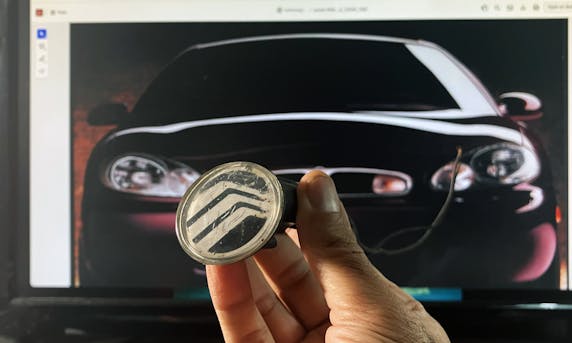
Ford was so proud of its effort to regain the place atop the family-sedan hierarchy that it even invited a journalist into the process. And I bet you didn’t know Ford splashed the cash for a backlight grille emblem on the sistership Mercury Sable. But that emblem and hundreds of other cash-burning features were jettisoned in favor of currying fleet-manager favor and beefing up the bottom-line of stockholders’ equity. Ford’s rush to jettison costs came to head in the mid-year introduction of the Taurus G. (The GL trim levels clearly had too many letters to be profitable.)
Then there’s the matter of the third-generation Taurus SHO, complete with a V-8, an automatic transmission, and a fair bit of extra weight. Can you hear the comments section firing up for this one?
Motorweek got its hands on a third-gen SHO finished in the period-appropriate Rose Mist Clearcoat Metallic and the publication heaped genuine praise on it. The front end clearly smooths out the regular Taurus’ catfish face, the V-8 powertrain was disturbingly refined, the ZF variable-orifice power steering was marvelous, and the seating upgrades had purpose. But the high-performance model was a pleasure spiked with pain, as all the benefits that made the 1996 Taurus such a great family car muted the SHO’s once-famous dynamics and rowdy demeanor.
Most folks will hammer on the fact that the V-8 SHO was only available with an automatic. A fair point, but most V-6 SHOs were sold with a slushbox, ensuring it would be fun for the whole family. And the odds of Ford’s carryover MTX manual handling the V-8’s added torque were unlikely. In any case, the odds weren’t high enough to satisfy an OEM’s need for durability.
Speaking of durability, the Achilles’ heel of the third-gen Taurus SHO was that Yamaha-tweaked V-8 mill. Sure, it sounds nice, and, if you modify the exhaust, it might be the best-sounding production V-8 ever. But failing cam sprockets with an interference engine design did in so many of these SHOs. And that’s a shame, because there are so many reasons to love these overtly oval family sedans.
So let me make a hot take, and suggest the 1996 Taurus was a great car with forgivable flaws (V-8 cam sprockets aside). The styling was logical but too radical, a leap which inadvertently busted the door wide open for cost cutting. The cheaper it looked, the quicker the circle closed: By the introduction of the fourth generation in 2000, that unique oval rear window had disappeared, leather seats had become plasticky, and hard interior polymers had come back in full force. Taken all together, the changes made a compelling reason to spend extra for the Taurus’ Japanese competition. Ford’s cost-cut Taurus is one reason why the Accord and Camry are still for sale to this day.
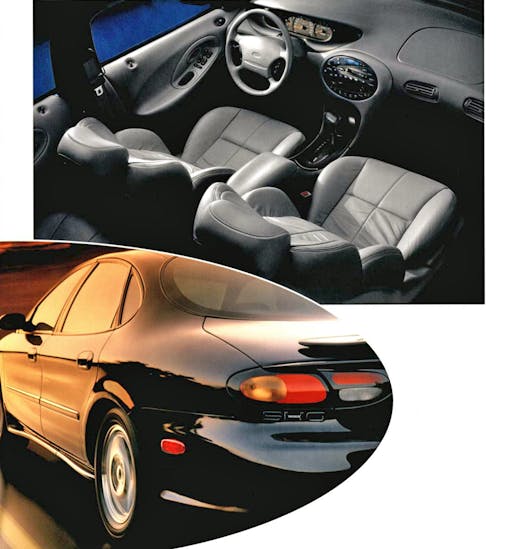
In some ways the third generation Taurus’ demise ushered in a new era of globally designed platforms with far more mundane proportioning and forgettable styling but exponentially more profit for their manufacturer. Why make a sedan for North America alone when you could leverage stuff made elsewhere?
By the end of the ’90s, North American automotive exceptionalism was limited to trucks and SUVs, making Ford’s bursting of this particular bubble a shame. But perhaps we knew that the Taurus’ well-contoured ovals were never gonna last when exposed to forces outside of Ford’s control.
***
Check out the Hagerty Media homepage so you don’t miss a single story, or better yet, bookmark it. To get our best stories delivered right to your inbox, subscribe to our newsletters.
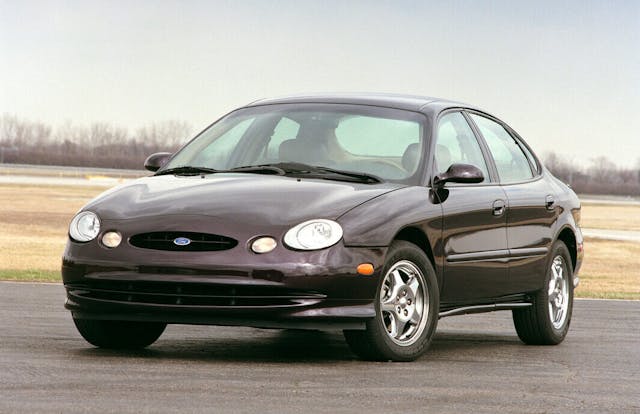
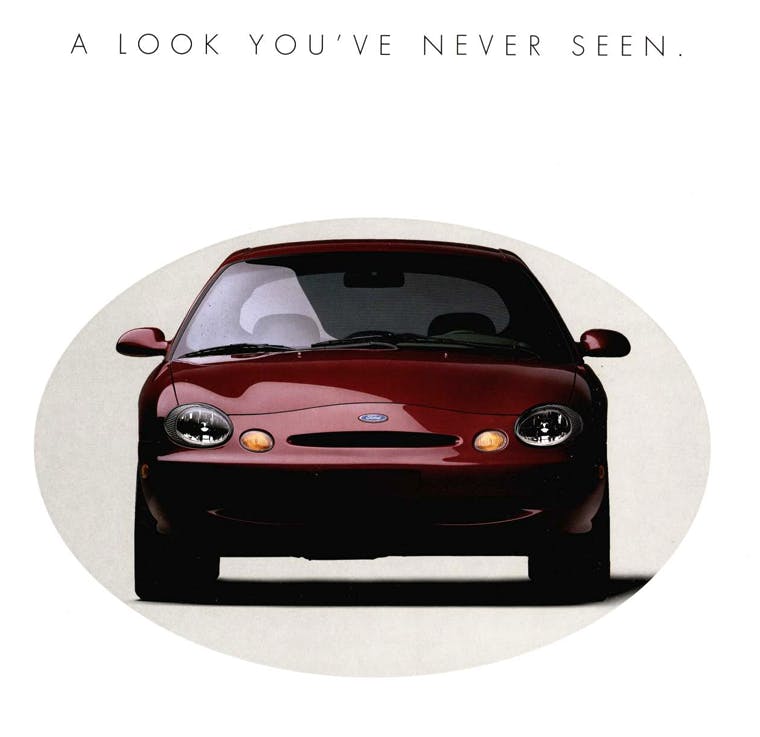
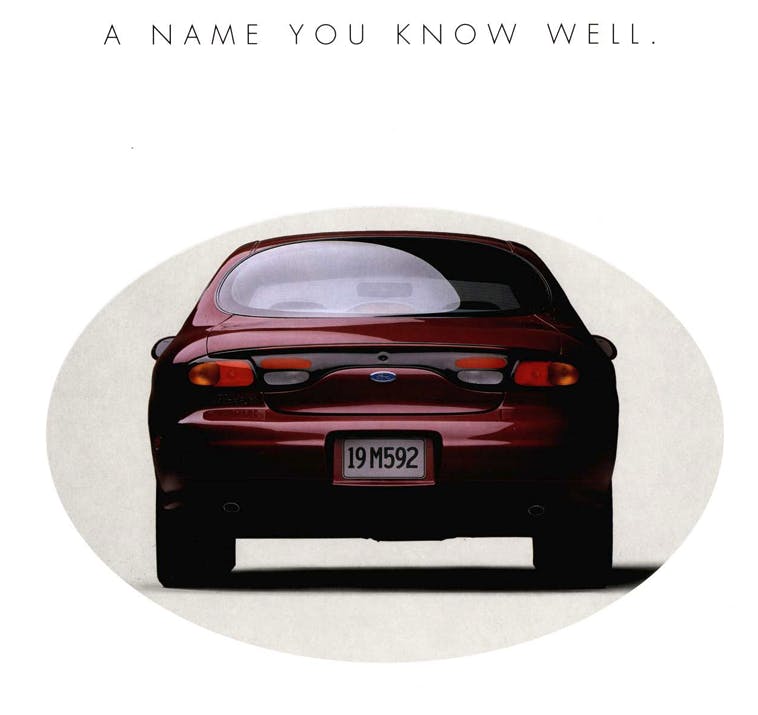
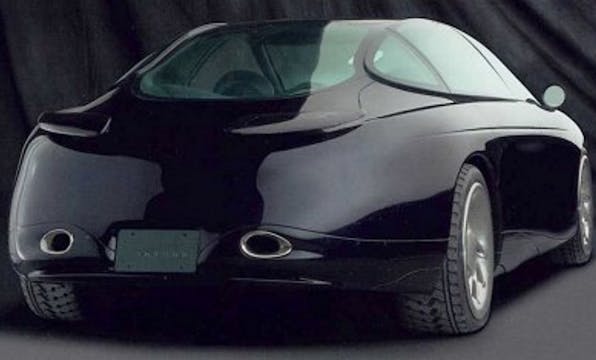
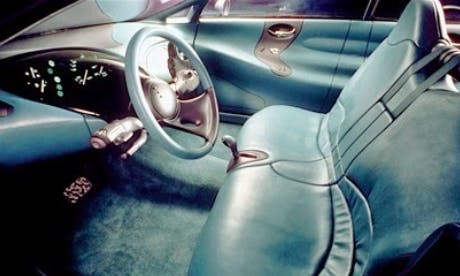
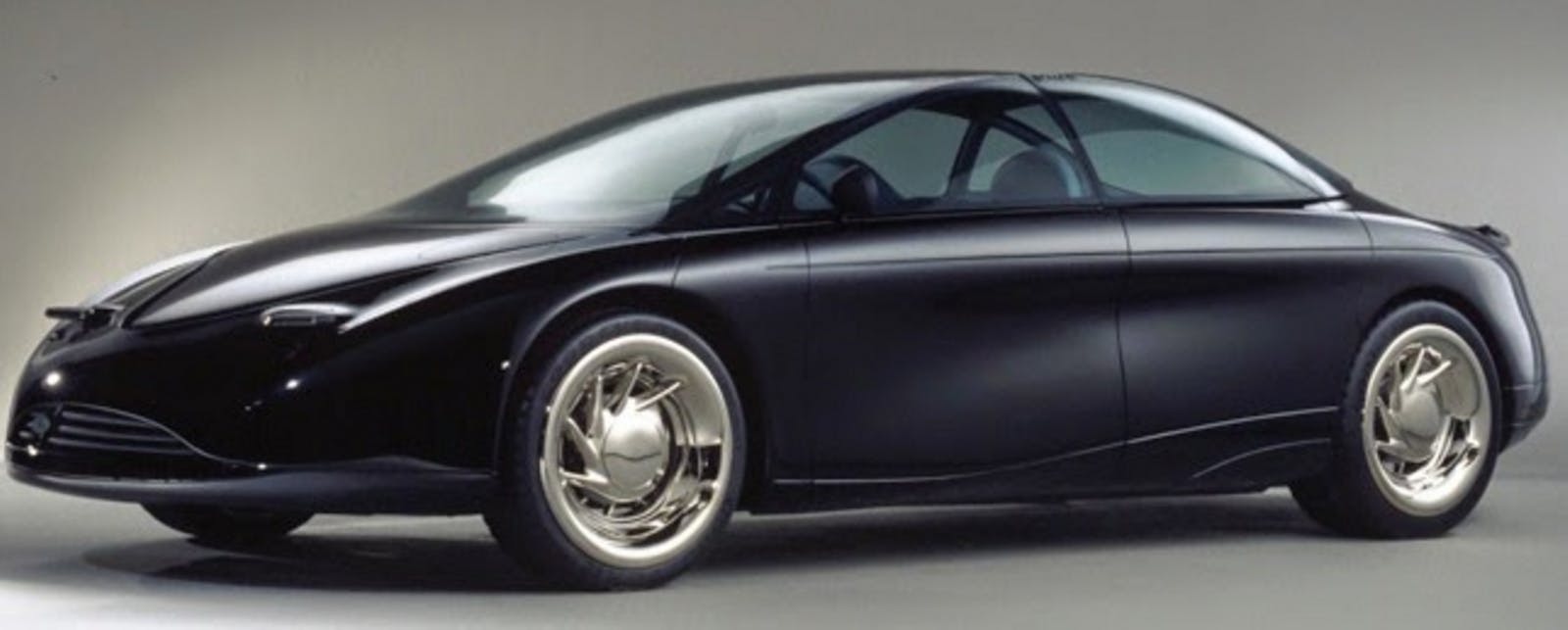

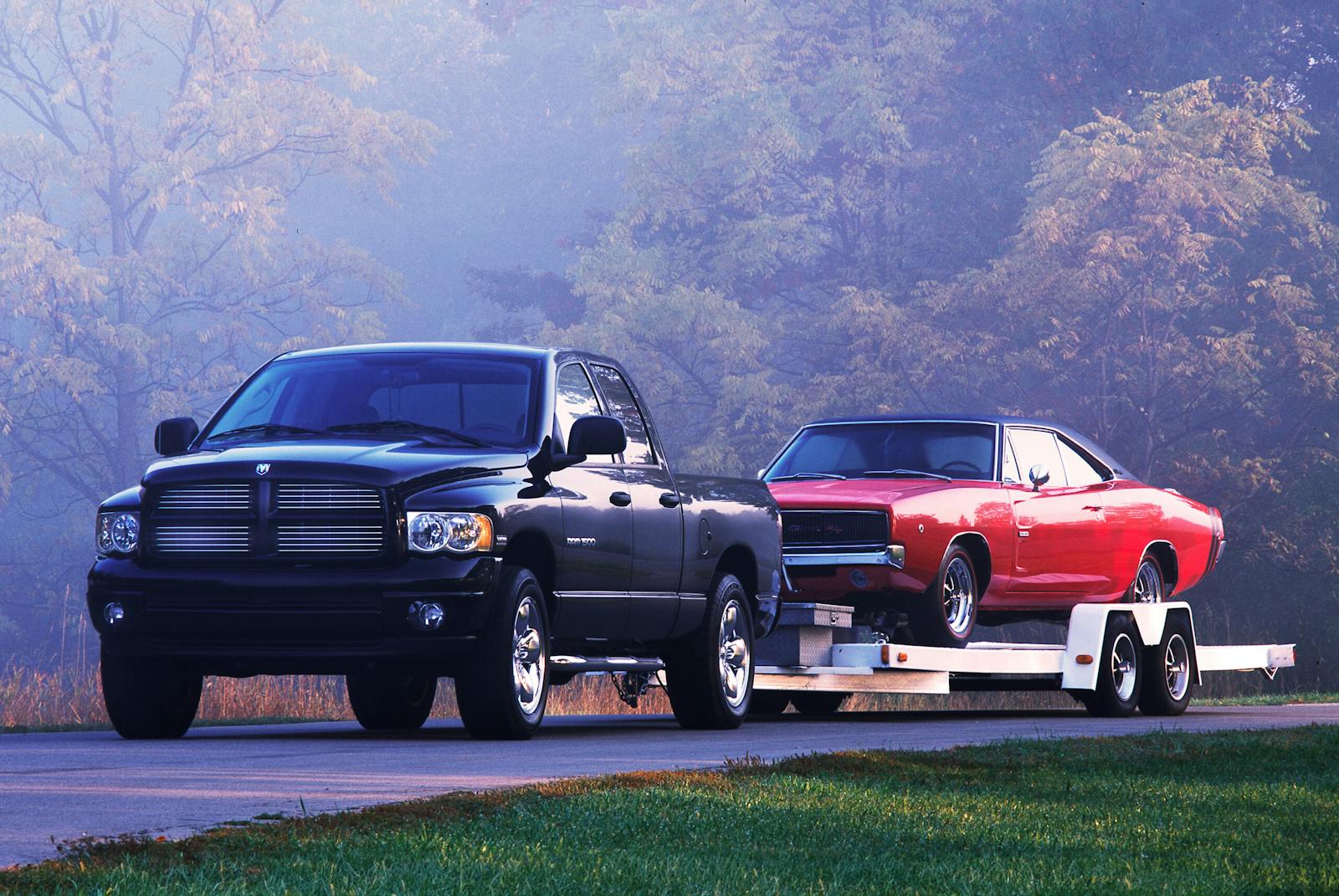
Funny . . . I still see Jelly Bean Tauruses driving around where I live . . . but a 90s Camry is a rare site.
The Taurus of course had a 5 Star crash rating . . . something Honda & Toyota did not acquire till 2004.
The 3 litre cammer motor was great, the pushrod motor was not wonderful. Unlike the 99 & up Hondas you could FIX the Taurus Tranny . . . not so with Accords & Acuras.
I have a 97 low mile SHO . . . fun to drive, easily revs to 7500 . . . my son had a little go with his buddies 6 series used BMW, supposed to be 500 hp . . . from 55 mph to well over 100, the Bimmer could not pull away.
Love your story! I still own my ’97 with only 57k on the OD. Got the antique plates on it now, then insured by our host Hagerty. I have used it for car shows only. Back in the day, everyone laughed at it. now, all these years later, there is NO laughing at the shows. Mainly, people don’t know what it is, and those that do have respect to see one in UNrestored, like new shape. I still have the OEM Z rated RS-A tires on it !!
The Black SHO in the pix above is just like mine . . .
Looks a lot better today than it did in the late 90s . . . although the similar year Camrys & Accords look like dated boxes of boring . . .
Many SHOs ran to well into the 400,000 kms = 248,000 mile range. The cams on the V8 were an easy fix, just weld them, an easy afternoon project. Have a spare 3.4 V8, thinking of putting it into a nice dark blue 88 TC with a 6 speed manual. Awesome engine, Cosworth did the block & Yamaha the heads . . .
Still an active SHO club, doing track days etc.
Hey there KR. Again, good to hear you are still active with you Ebony Satin G3 ! I was hangin’ with the NESHOC group here in MA. years ago. I remember very well the CAM WELD parties too (O: Never got mine done, but I don’t worry about it. Engine is quiet as a mouse under the hood. Exhaust a bit louder LOL
All you lovers and haters need to know- me and the shop put the Yamaha head V6/manual into the back of a Ford Fiesta. Saw it in a magazine, had a burnt SHO, owners abandoned, engine/trans fine, interior flambé. Some jig and torch work, re-rig the control cables, voila! Magazine car had dual Supertrapps exiting center, we ran crossover true duals, exiting just behind the rear tires. Car was a primer experiment, deeply loved and won show trophies. Sold in primer, I often wonder what happened to it; ran a low 12 second 1/4 , very light steering. And looked like a box. Lotsa glass, very little safety. Wish I knew where it went.
An article at the time it came that said Ford’s then-CEO, Alex Trotman, looked at a model and told the designers, “You’re not scaring me enough.” That fish face and oval back window were scary, all right.
Oh the horror! Makes you want to crawl into bed and pull the covers tight so you can’t see it, LOL !
I worked for a Tier 1 at the time, so we got to see quite a bit of the development. I always liked the wagon. I remember being intrigued by the front “center” seat cushion that flipped forward into a cup holder. Also, a green and a rust/orange interior colors. I would still drive a wagon with the 3.0 Duratech.
I love the 3rd gen SHO, especially the ‘96/‘97 MYs before the decontenting really hit. Weld the cam sprockets and you’ve a great-driving and solidly-built freeway cruiser that will run forever.
Left the AF in 2003 and picked up a 35k mile 99 taurus with the vulcan for a mere 3500bucks. That car is still in daily service TODAY! I’m not saying it’s anything stellar by any means. It runs and drives and the air is cold. Probably has around 200k miles today. Typical car stuff such as starter, alternator, handful of junk duralast batteries and some new A arms. Hail storm took out the back window and banged up the body in 2020. Insurance paid $3500 and let me keep the car. Put a back window in for 200bones and kept on driving it. This old car owes me nothing. That and I’m one hell of a mechanic!